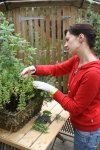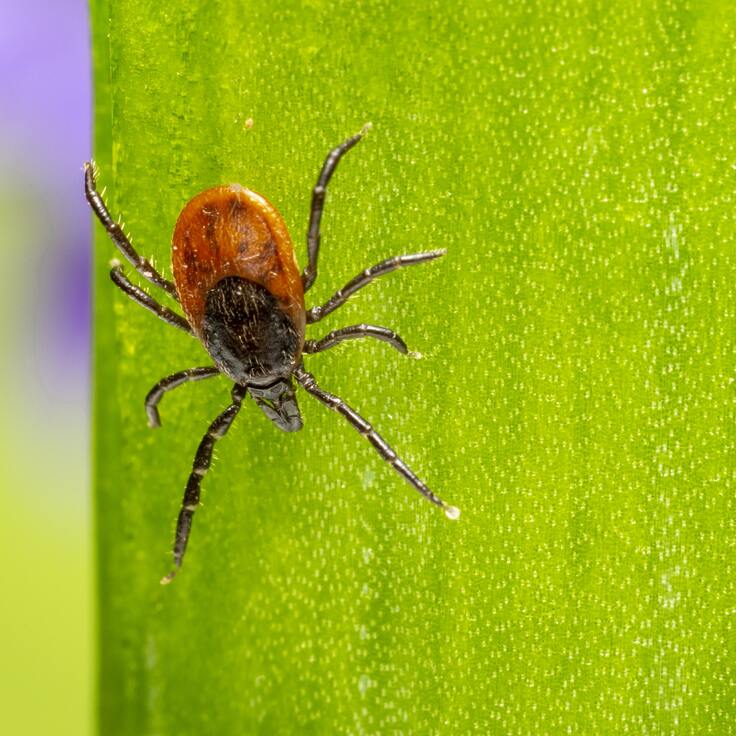Making the most of your Tomatoes!
Kris Collins looks at the causes and cures of some of our most common tomato problems
If you’re one of those who, for whatever reason, can’t stand biting into a fresh tomato, I bet the chances are you still eat plenty of them – in sauces, soups, chutneys, salsas and even stews. And don’t forget baked bean juice and ketchup!
However there are still plenty of us who like raw tomatoes, for they are amongst the most popular of home-grown veg (although technically they’re fruits, I always refer to them as vegetables, as it is very rare – and not very nice – when people try to use them in desserts…I once, and only once, had tomato and mascarpone ice cream!).
Despite their popularity in gardens across the UK, our climate is not easy for growing them. After all, these are tropical plants, so they need a lot of mollycoddling. Then there are many pests, diseases, viruses, and other problems that can go wrong with them, as these two pages testify.
When it comes to problems with the fruits, keep a sharp eye on them when they are developing: take action as soon as any pest or disease symptom is spotted, to avoid more fruits being affected. Some tomato problems can be resolved simply by watering them more regularly!
If you go about growing tomatoes intelligently, and you get it right, they can be hugely rewarding crops that keep delivering right up until the first frosts. So what are the main tomato pitfalls?
Pests
Whitefly
Severe infestations of this sap-sucking insect can seriously weaken tomato plants – and the sugary deposit they leave behind them attracts the sooty mould fungus. Plant French marigolds nearby; these deter the pest. In the greenhouse introduce the Encarsia formosa wasp to predate the whitefly. Or spray with BugClear for Fruit & Veg.
Red spider mite
Only problematic in the greenhouse. These tiny mites – which can suck the life out of a tomato plant – arrive unnoticed, and multiply rapidly. Plants suddenly appear dry and crusty, the leaves covered with white pinprick holes, accompanied by a yellowish mottling. Introduce the phytosieulus predator, or spray with Bayer Organic Bug Free.
Tomato moth
Tomato leaves and fruits are eaten by bright green, fat caterpillars; each can be 1½in (35mm) long when fully grown. In the greenhouse, leaves closest to the glass are often attacked first. Pick off and dispose of the caterpillars, or spray with Provado Ultimate Bug Killer when the caterpillars are seen.
Ghost spot
Pale green or yellow rings appear on unripe fruits; as the fruit reddens, the rings turn more yellow or pale orange. The fruit’s development is not hindered and, actually, the tomato is perfectly edible. The condition is caused by the same fungus as grey mould (botrytis), but there is no need to take action (however you won’t win any prizes at the village show!)
Tomato leaf mould
Yellow blotches develop on the upper leaf surface; eventually leaves turn brown, wither and dry, but remain hanging on the plant. Mostly a condition of greenhouse-grown plants. Grey mould (botrytis) may become a secondary infection. Improve greenhouse hygiene. The problem is exacerbated by little air movement around plants, so next year space plants farther apart.
Diseases
Blight
Airborne fungus spread from infected potatoes. Stems, leaves and fruits of tomatoes wither and die. Spray plants before infection with Bayer Fruit & Vegetable Disease Control.
Tomato mosaic virus
This appears as twisted, deformed foliage, with light or dark green or yellow mottling, and the plant becomes stunted. The virus is spread by insects, as well as hands and knives when handling the plant. There is no cure, so carefully lift and burn infected plants. Look for resistanr varieties, such as F1 ‘Shirley’ and ‘Fantasio’. Smoking is discouraged around tomatoes, although there is some scientific debate over whether the virus could possibly survive being burned and converted into smoke.
Cultural problems
Here are five typical tomato problems – and all are brought about as a result of things you have, or haven’t done, to your plants
Blossom end rot
Sunken dark brown areas form at the base of swelling tomato fruits. It is caused by a lack of calcium in the plant, which is in turn caused by interrupted intakes of moisture. Much more common in pots and grow-bags, which dry out rapidly, the problem can largely be cured by more efficient watering – several times a day if required.
Greenback
A green or yellow ring of unripened tissue remains around the stalk end of the tomato. The usual cause is heat injury, from direct bright sunlight. To prevent this from happening next year provide shade and ventilation, and do not remove too many of the upper leaves as these provide good shade. Weekly feeds of Tomorite will help. Next try resistant varieties such as ‘Moneymaker’, ‘Alicante’ and ‘Golden Sunrise’.
Splitting
Fruits develop normally and then, frequently just before we want to pick them, they split open. In bad cases, secondary grey mould infection occurs. It is caused by by erratic swelling of the fruit, usually as a result of irregular watering, and sometimes by wildly fluctuating temperatures. Improve watering, and in the greenhouse try to lower temperatures through better ventilation. Remove affected shoots are use them in cooking.
Magnesium deficiency
Magnesium is the central atom of chlorophyll molecules, meaning that deficiency quickly shows – leaf veins remain green but the areas between them go yellow. Eventually leaves die and fall off. Overcome the problem by using liquid seaweed as a foliar spray.
Copper deficiency
Bluish-green discoloration appears on the foliage, and this can lead to die-back of stems. Fruit production is inhibited. It is caused by a deficiency or poor availability of copper in the soil, and is most likely to be found in peaty or highly acid soils. Several applications of a general fertiliser, starting as soon as the problem is identified, will probably resolve the problem.








